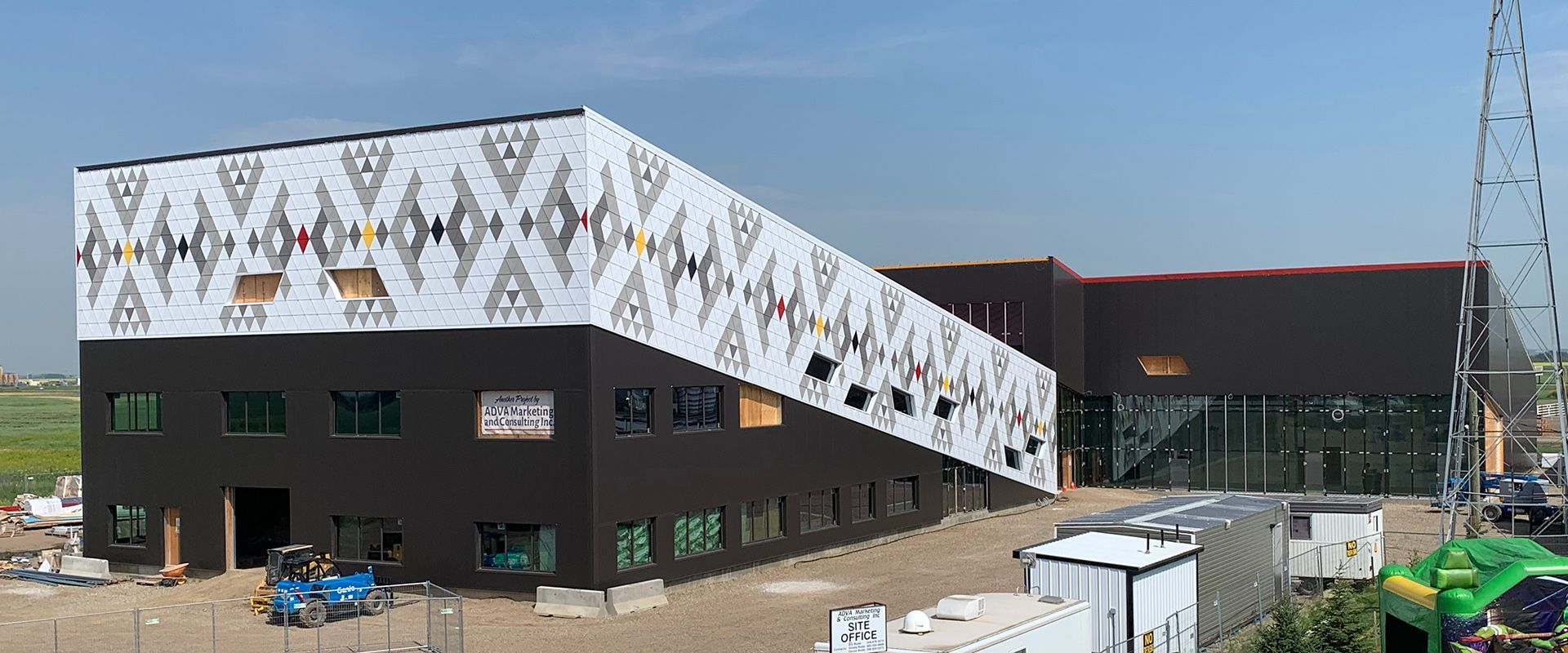Batting Down the Curveballs to Construction – Hitting It Out of the Park
John Lohan • August 9, 2022
How building companies have adapted to survive, and even prosper, despite economic and market challenges.
No construction project has been immune from the recent confluence of increased demand, labour and material shortages, and inflation that has struck an entire industry. These shocks have rippled through the construction sector, disrupting timelines, affecting revenues and even driving some small operators to the brink of closing. What looked like the straight path of a fastball suddenly became a changeup that dropped away. Although all building companies have been challenged by varying degrees, some have had more success swinging at the plate. What’s been the difference?
In this second article of our two-part series (read the first part, "The Curveballs to Construction"), we look at what companies can do to withstand the system challenges and what Double Black Construction has done to create a more resilient business. What we’ve learned only helps to prepare us for future market surprises and supply disturbances. The pitches are always changing; with a little research and practice, most companies can walk up to the plate with confidence, ready to handle whatever gets thrown at them.
Anticipating the Future Versus Minimizing Impact
Setting aside the challenges of ongoing labour shortage and training the next generation of skilled tradespeople, companies can either try to predict what’s going to happen next (a case of “hoping for the best while planning for the worst”) and build in capacity to handle it, or they can have a contingency plan in place to minimize the impact when it does happen. In reality, strong companies are ready to try both. Not everything can be anticipated. Construction disturbance continues to surprise even the most prepared of organizations – there are just too many variables for complex operations based around delicate lines of supply. Long lead times due to materials shortage further complicate long-lasting supply-chain issues. Operators must work with patience, fortitude and have ample resources in reserve to get them through temporary shortages.
Double Black Construction prepares in advance by continually managing their inventory, relationships and client expectations. Construction plans are built with a certain about of flexibility to minimize as many of the impacts as possible. The company applies this foresight along three main areas of activity with distinct audiences.
1. Close Relationships with Domestic Manufacturers
Whether it’s family, friends or business partners, strong long-term positive relationships lead to beneficial outcomes and more stability. Double Black Construction works with domestic building manufacturers to schedule projects as far in advance as possible. The idea is to create a more reliable source of supply. Extended lead times help anticipate or avoid delays, increase availability of necessary materials and, ultimately, create a stronger relationship with more room to negotiate better pricing based on increased long-term order volume.
Double Black Construction quotes contracts well in advance, sometimes by half a year or more, and are bound to honour those prices, regardless of what happens to supply costs in the meantime. Ordering building materials well in advance assures getting what is needed (concrete and steels being two commodities that are particularly subject to fluctuation), although poses a risk that margins may become tighter. The cost squeeze can place a lot of smaller builders in a very tough situation. Stable, guaranteed pricing provides certainty to clients. The idea of “friend-shoring” (or secured supply chains with more local manufacturers) creates a level of certainty for the future when so many global influences create chaos for imported materials.
Most construction companies have been forced to extend lead times; a trend that is not likely to decline. Three to four months to start a job has now become eight to 12 months. Such advanced planning decreases accuracy on the cost side for builders but is offset through effective budgeting and making advance purchases to shore up the supply side.
2. Predicting the Proper Levels of Inventory
Large inventories tie up cash and idle stockpiles sitting in storage are expensive. That’s why pre-ordering with dependable manufacturers is important for maintaining timelines. Procuring only what is needed close to building times means materials will be ready without causing any delay to the start of a client’s project.
Double Black Construction uses intelligent forecasting to benefit clients. Using an order-up-to inventory model (a method to identify and maintain the optimal amount of inventory for materials that hold their value and have recurring demand) ensures the company is not tying up money in excess inventory or running short and losing out on potential sales.
“BASEBALL IS THE ONLY FIELD OF ENDEAVOR WHERE A MAN CAN SUCCEED THREE TIMES OUT OF TEN AND BE CONSIDERED A GOOD PERFORMER.”
~ Ted Williams
Preparing even in the best of times is difficult and not every company can get it correct every time (after all, the economy is complicated and changes in small factors can lead to big crises). Like baseball managers, no project manager can’t get all their forecasts correct every time.
Double Black Construction builds flexibility into both its planning schedules and budgets to try to accommodate short-term disruptions. No one could have anticipated supply to decrease at the same time as costs increased so sharply. That’s why the company uses procurement best practices to manage the company efficiently.
Proper forecasting necessitates constant communication with suppliers and personnel to stay on top of changing variables, set proper expectations and inform clients of progress. Forecasting helps ensure materials will be available. Ordering only what is needed keeps costs and pricing down. Working closely with supply partners means we can track shipments and deliveries more carefully to not create unnecessary delays.
3. Locking in Prices Early and Setting Expectations
And speaking of pricing, clients can enjoy savings by ordering their building project well in advance, especially in expectation of higher commodity prices. Clients can rest assured their final project will be finished on time despite any potential disruption that could arise affecting the rest of the construction industry.
Double Black Construction’s leadership team enjoys helping clients prepare for their project to allow them to understand market conditions and what is involved with their construction. Helping clients made educated and intelligent decisions is vital. Locking in pricing when it is most affordable is one advantage to working with a constriction team that is looking out for your best interests. Our company’s history of working with architectural firms also aids in minimizing the impact of scheduling and understanding commodity markets. Combining the most knowledgeable industry players who know the industry best helps alleviate potential issues, such as supply shortages or rising prices, well before they affect the pricing of the final work.
Dust Off Your Shoes and Start Swinging
While the global economy and marketplace continue to throw wild pitches, playing on a reliable, experienced team makes understanding the game more manageable. Double Black Construction works with their lineup of talented professionals and can count on them for relief when the situation gets tough. By managing supply inventories, long-term relationships with domestic manufacturers and creating flexible and realistic expectations with clients, the company can help create reassurance that construction timelines will get met at affordable prices regardless how challenging the marketplace gets.
Contact us today at (833) 322-2722
or by email at info@DoubleBlackConstruction.com
to get your free quote and to start the planning process for your next steel building.
About the author:
John Lohan has over 15 years of experience designing, engineering and installing over 500 metal buildings for architects and clients across North America and the globe. He’s managed all aspects of steel building construction, including material logistics and managing local and foreign construction teams. John also has special expertise in concrete foundation and excavation. He can be contacted at Double Black Construction at (833) 322-2722, by email at john@DoubleBlackConstruction.com
or on LinkedIn.






